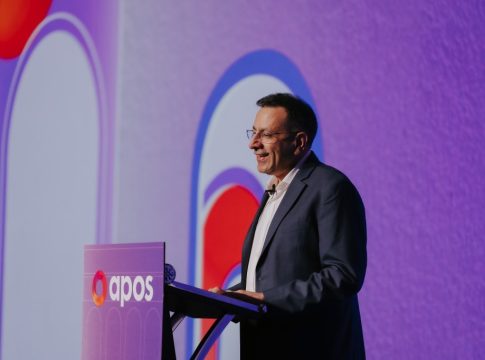Embracing AI: A Call to Action for Media and Entertainment
At the forefront of today’s media and entertainment discourse is the intersection of artificial intelligence (AI) with creativity. Sanjay Gupta, President of Google’s Asia-Pacific division, recently addressed these dynamics at the Asia Pacific Online Summit (APOS) in Bali, urging industry players to seize the potentials of AI while navigating its challenges.
AI as a “Magic Wand”
Gupta illustrated AI’s transformative potential by highlighting Google’s immersive production of The Wizard of Oz at the cutting-edge Las Vegas Sphere. He characterized AI as a "profound pivot"—a technology that doesn’t just enhance production capabilities but redefines what is creatively possible. Imagine films produced in real-time and available in various languages to a global audience. This is the vision Gupta shared, suggesting a future where creators can engage larger audiences through technological advancements.
Navigating Concerns: Talent and Creativity
Despite the optimism, Gupta didn’t shy away from addressing the mixed feelings surrounding AI’s growing role in entertainment. Two main concerns emerged:
-
Talent Protection: Who will safeguard the interests of artists and creatives in an AI-driven landscape?
- Creativity Preservation: Engaging various stakeholders to ensure authentic creative expression remains unscathed is crucial. Gupta pointed out that AI should be viewed primarily as a tool that amplifies human capability rather than a replacement.
A Digital Landscape in Transformation
The conversation wasn’t confined to AI. Gupta noted a dramatic shift in media consumption habits across Asia—currently home to four billion viewers clocking over seven hours of screen time daily on a staggering five billion devices. This represents a significant evolution from approximately two billion screens just a decade ago.
- On-the-Go Content: The rise of mobile devices has shifted consumer preferences toward short, accessible stories designed for consumption across varying formats—videos, audio, images, and even games.
With the burgeoning demand for adaptable content, the region indicates a ripe opportunity for growth, contributing roughly 15% to global media revenues.
Merging Digital and Physical Realities
Gupta also forecasted a future where the barriers between digital and physical worlds further dissolve. He anticipates advancements in augmented reality (AR) and smart technologies enabling richer, more immersive storytelling experiences. This convergence could redefine content consumption, making interactions not only more engaging but also extraordinarily personalized.
Conclusion: The Road Ahead
The discussions at APOS reflect a pivotal moment for the media and entertainment sectors. As AI continues to evolve, it offers unprecedented opportunities balanced by significant responsibilities. The challenge will be weaving together innovation and integrity, ensuring that while technology expands the horizons for storytelling, the heart of creativity is preserved. The future of media lies not just in advanced tools, but in how we choose to wield them.

Writes about personal finance, side hustles, gadgets, and tech innovation.
Bio: Priya specializes in making complex financial and tech topics easy to digest, with experience in fintech and consumer reviews.

